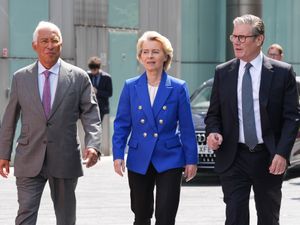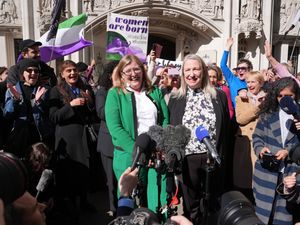Jobless rate rises again unexpectedly as economic uncertainty takes its toll
The rate of UK unemployment rose to 3.9% in the three months to March, up from 3.8% in the previous quarter, the ONS.
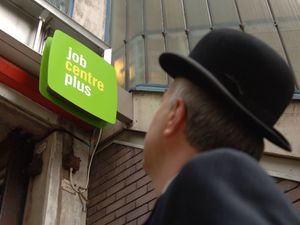
Britain’s unemployment rate has risen again unexpectedly while vacancies have fallen to the lowest level for 18 months as economic uncertainty weighs on the UK’s jobs market, according to official figures.
The rate of UK unemployment rose to 3.9% in the three months to March, up from 3.8% in the previous quarter and the highest level since the three months to January 2022, the Office for National Statistics (ONS) said.
Most economists had expected the rate to remain unchanged at 3.8%.
The number of vacancies fell by 55,000 quarter on quarter to 1.08 million in the three months to April, marking the 10th fall in a row.
Vacancies are now at the lowest level since June to August 2021, according to the ONS.
The ONS said this reflects “uncertainty across industries, as survey respondents continue to cite economic pressures as a factor in holding back on recruitment”.
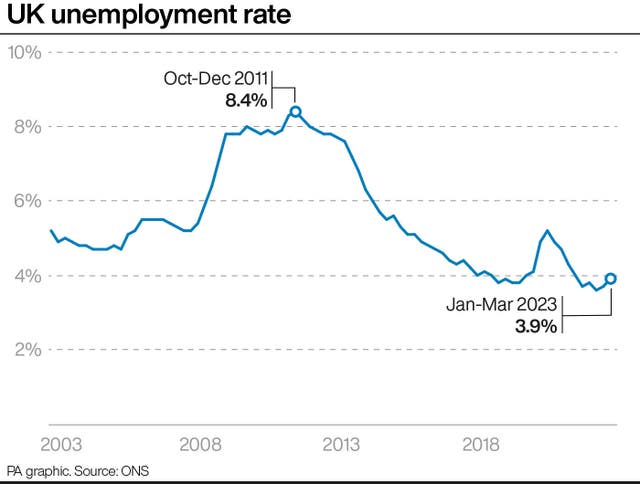
But the figures also showed a rise in the employment rate to 75.9% and a fall in inactivity as more men in particular starting looking for work.
In another sign of a flagging jobs market, the more timely PAYE figures showed the first fall in workers on payrolls since February 2021, down 136,000 to 29.8 million.
Darren Morgan, director of economic statistics at the ONS, said: “Employment and unemployment both rose again in the first three months of 2023, driven in particular by men.
“This means the number of those neither working nor looking for work continues to fall, although the number of people not working due to long-term sickness rose again, to a new record.
“However, the number of people on employers’ payrolls fell in April for the first time in over two years, though this is an early estimate that could be revised later.”
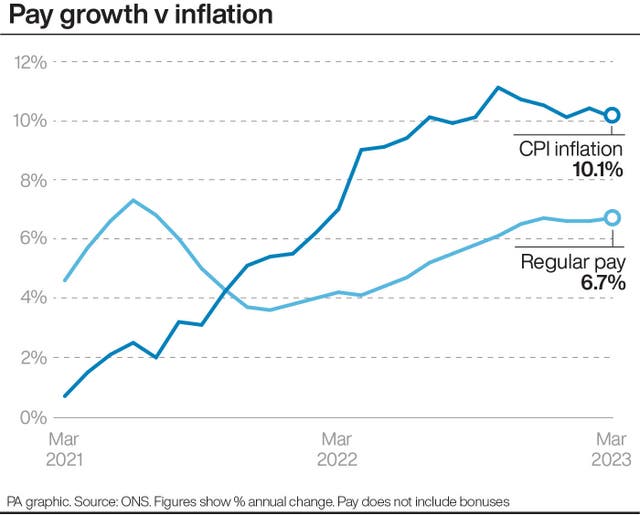
“Despite continued growth in pay, people’s average earnings are still being outstripped by rising prices,” he added.
The figures indicate that while more people are returning to the jobs market, not all of those looking for jobs are able to find work.
And the number of those off work due to long-term sickness rose to a new record high, at more than 2.5 million, the ONS said.
The ONS data also showed that wages are still failing to keep pace with rising prices, with real regular pay excluding bonuses down 3.1% once Consumer Prices Index (CPI) inflation is taken into account.
This is despite another rise in average regular pay growth, to 6.7% in the three months to March.
Chancellor Jeremy Hunt said: “It’s encouraging that the unemployment rate remains historically low but difficulty in finding staff and rising prices are a worry for many families and businesses.
“That’s why we must stick to our plan to halve inflation and help families with the cost of living.”
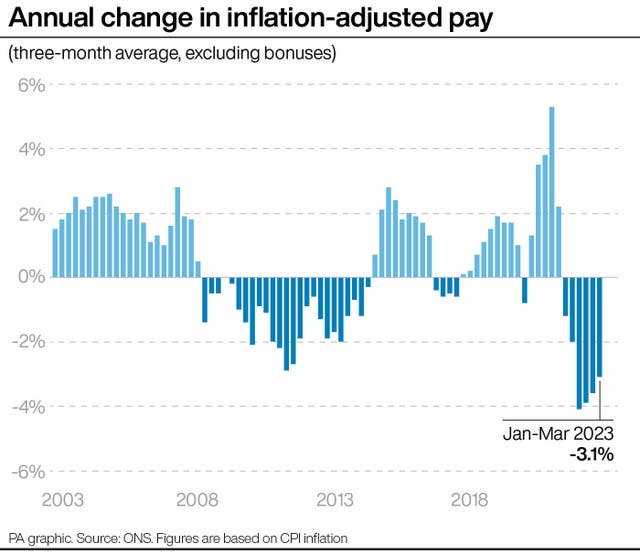
The data also laid bare the impact of strikes across Britain, with 556,000 working days lost due industrial action in March, up from 332,000 in February.
But the pay gap between public and private sector is narrowing.
The ONS said average regular pay growth for the private sector stood at 7% in the three months to March and 5.6% for public sector workers – with the latter being the largest since August to October 2003.
The figures showed the number of unemployed Britons rose by 60,000 to 1.3 million in the three months to March, while those in employment also lifted – by 182,000 to 33 million.


